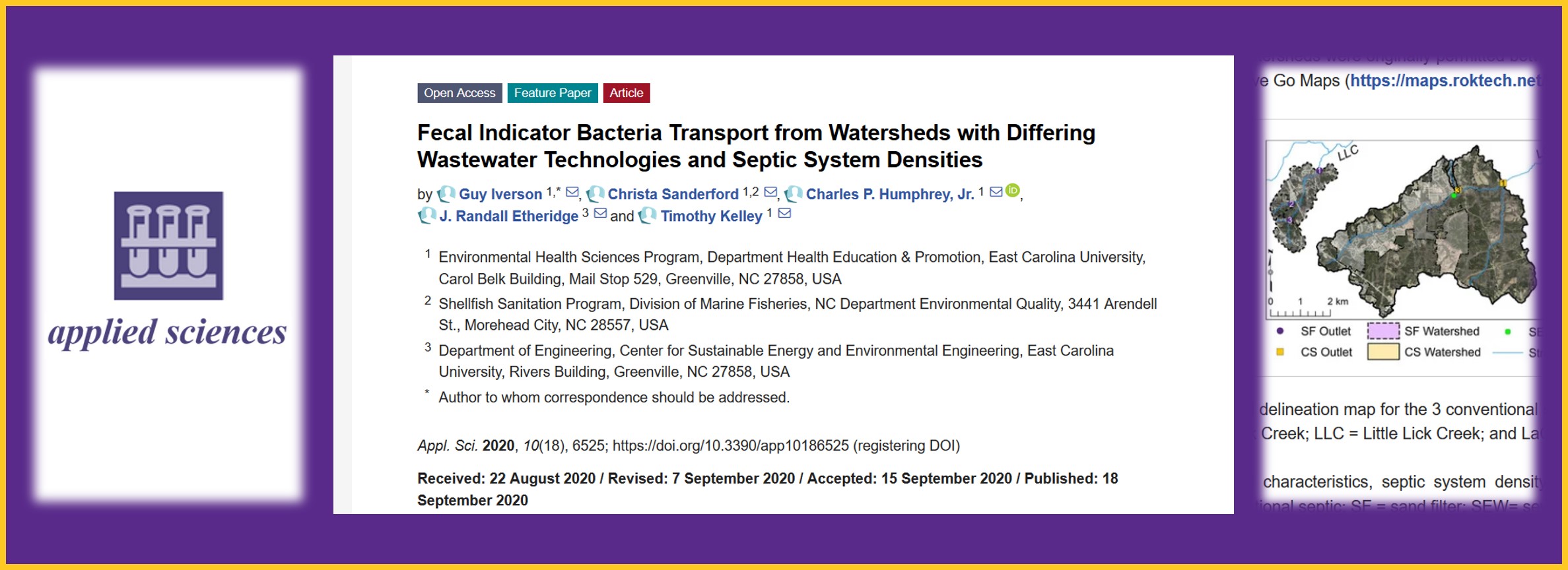Iverson G, Sanderford C*, Humphrey C, Etheridge JR and Kelley T (2020). Fecal Indicator Bacteria Transport from Watersheds with Differing Wastewater Technologies and Septic System Densities. Applied Sciences 10(18):6525. doi:10.3390/app10186525
Abstract
Wastewater contains elevated concentrations of fecal indicator bacteria (FIB). The type of wastewater treatment technology and septic system density may influence the FIB concentration and exports at the watershed scale. The goal of this study was to gain a better understanding of FIB concentrations and exports from watersheds served by conventional septic (CS) systems, sand filter (SF) septic systems, and a municipal sewer (SEW) system. Seven watersheds (3 CS, 3 SF, and 1 SEW) were monitored to quantify FIB concentration and export monthly from April 2015 to March 2016. The type of wastewater treatment did not yield significant differences in FIB concentration or exports when pooling watersheds using similar wastewater treatment. Watersheds with the highest septic densities (approximately 0.4 systems ha−1) contained greater FIB concentrations and exports than watersheds with the lowest (approximately 0.1–0.2 systems ha−1), but only FIB concentrations significantly differed. These findings suggest that when the septic system density exceeds 0.4 systems ha−1, water quality degradation from septic leachate may be observable at the watershed scale, especially in watersheds dominated by residential development. More research is recommended to determine if this density threshold is similar for other water pollutants and/or in watersheds with differing hydrogeological, land use, and wastewater characteristics.
*Christa Sanderford is an alumna of the ECU MS Environmental Health Program.
Applied Sciences – current impact factor: 2.47; 5-year impact factor: 2.46; scopus: 2.4



